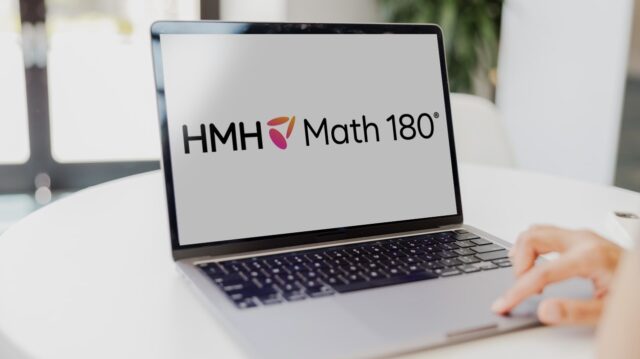
Lack of time is a perennial problem for teachers. According to Pew Research Center, most teachers (84%) say there’s not enough time during work hours for grading, lesson planning, paperwork, and answering work emails. A lack of curriculum resources exacerbates the problem.
This was the story of Bridgeport Public Schools, in Connecticut. Teachers spent hours stringing together disparate resources to create lessons that would support their math curriculum. But since these lessons didn’t align with benchmark and state assessments, teachers couldn’t benefit from any “what to do next” insights.
“What we had was a very disjointed program,” says Herminio Planas, the director of mathematics for Bridgeport Public Schools. “We were surviving by creating our own resources, which is difficult because now you have to create your own assessments. This makes it hard to gauge student progress.”
The data reflected the disarray. The district’s math proficiency rate was 9%, much lower than Connecticut’s rate of 38%. Bridgeport Public Schools educators were understandably eager to tell a different data story.
Math curriculum matters
The district adopted the Into Math curriculum in the 2022–2023 school year for Grades K–8 after an initial pilot. Things began to change for the better. Teachers no longer had to cobble together their own resources, and assessment data was finally united with the curriculum, to inform lessons and differentiate instruction for every learner.
“With Into Math, teachers appreciate having all their instructional resources in one place,” says Planas. “They don’t have to look outside the program for materials. We love the lessons in Teacher’s Corner [on HMH Ed] too. They’re powerful because you see an actual professional implementing them.”
In past years, the district focused mainly on procedural fluency. Now Planas says the focus is on the “trifecta”: conceptual understanding, procedural fluency, and problem solving.
“These are the three pieces that must be in a good lesson to make it balanced,” says Planas, “and they’re included in the Into Math program. That's one of the reasons why we purchased it.”
Pursuing steady growth
In a small amount of time, the Into Math curriculum made a big impact on students’ interim assessment scores. At the beginning of the 2022–2023 school year, only 6.2% of second graders were performing at or above grade level. But by the end of the school year, the percentage had risen to 39.1%. Similarly, third graders began the 2022 school year at a 5.7% proficiency rate that rose to 36.3% by the end of the school year. See the gains in Grades 2–8 in the chart below.

The increase in students' interim assessment scores in the 2023–2024 was just as dramatic. See the chart below. At the beginning of the school year, 10% of second graders were performing at or above grade level, and by the end the percentage had risen to 50%. Third graders began the year at a 12% proficiency rate that rose to 49 percent by the end of the school year.
“This growth has given teachers a big confidence boost,” says Planas. “Students are truly learning with Into Math, and the data show it.”

The charts above show how students’ interim assessment scores increased in the 2022–2023 and 2023–2024 school years, after the implementation of the Into Math curriculum in Bridgeport Public Schools.
Keeping the momentum going
The goal now is to see the increase in interim assessment scores reflected in students’ standardized test scores. Planas attributes not seeing this increase in the 2022–2023 school year to teachers only completing half of the pacing guide. So this school year, the district made poster-size versions of the pacing guide for every teacher and principal, and principals and lead teachers visited classrooms regularly to ensure instruction was on track. By early June, says Planas, teachers had completed 90% of the pacing guide.
The district also held three data chats with principals and teachers to look at the numbers and ask questions like, “Which students are progressing?” and “Which students need more time in intervention?”
Planas expects that the steps they’re taking will continue to pay dividends if they keep at it. “None of this comes easy,” he says. “It’s taken a lot of coaching and professional development to get this off the ground. It’s a combination of the work we’re doing in the math department, the support that teachers get at the school level from lead teachers, as well as the PD from our department and the HMH program.”
‘Math looks exciting now’
Bridgeport Public Schools teachers appreciate that Into Math provides easy access to data that’s tied to the core curriculum. They also like that the program includes real-world problems that align with their standards and keep kids engaged.
“Math looks exciting now,” says Planas. “Students are working together, talking through the challenges, and coming up with solutions.”
Along with students’ success has come a change in the way they see math. Planas says they like it now, and they’ve even begun to plan futures for themselves that once felt out of reach.
“If you asked a student ‘What’s your favorite subject?’ 10 years ago, they wouldn’t have said math,” says Planas. “It’s totally different now.”
***
Discover how Into Math for Grades K–8, and the Spanish version HMH ¡Arriba las Matemáticas!™, helps students build productive perseverance in problem solving and apply knowledge to higher-level mathematics and beyond.
Get our free Math Intervention eBook.












